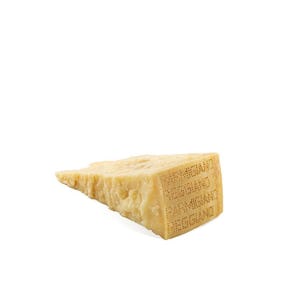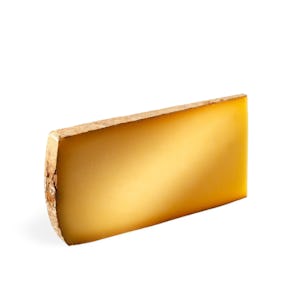
Beaufort D'ete AOC
The remarkable giant
TASTING NOTES FROM THE CURATOR
With its pale-yellow color, and smooth and creamy texture, Beaufort gives a distinct, strong aroma, calling back grassy mountainsides and alpine air. Its flavor is rich and strong, tasting of caramel and butter, with floral, herbal notes.
This AOC-protected cow cheese must be made with 80% of its milk from Tarantaise cows (an ancient mountain breed), and each wheel must be sourced from only a single herd of cows. A batch of Beaufort can go to up to 45 kilograms in weight, and takes as much as 500 liters (around 45 cows) of milk to make.
PAIRINGS AND PREPARATION
A hard cheese, Beaufort is excellent eaten on its own, paired with fruitier wines such as a G.D. Vajra Moscato D’Asti. And like most alpine cheeses, it makes incredible fondue. Its delicious meltiness also makes it a great ingredient to kick your classic grilled cheese sandwiches, plain omelettes, and your standard risottos up ten levels. And because this cheese pairs so well with white wine, it is also a brilliant partner to fish dishes, especially salmon. And if you’re feeling daring, you could make a cheese soufflé with it, too.
DOWN TO A T
The creation of Beaufort is a very careful, exacting process, where the milk is first heated then cast in beechwood hoops, giving it its concave shape. Pressed for 24 hours, taken out, and cooled for another 24, this hard cheese is then soaked in brine and stored for one to two months. During this process, one side of the cheese is salted in the morning, turned over, and massaged in the afternoon. This gives it its firmness and density. Once the rind has reached a level of maturity, it is then smeared with morge (a mixture of brine, whey, and old cheese scraps), then aged for six to 12 months in a cool mountain cellar.
Storage Instructions
Cheeses (except brined ones in jars) should be stored in the crisper or the butter drawer of a refrigerator, not on the shelves themselves. This is to help regulate their temperature and humidity levels—and prevents the formation of mold. Once opened, they should not be kept in their original packaging. Hard cheeses should ideally be wrapped in cheese paper after opening. An alternative is to wrap them tightly in parchment paper to allow them to breathe. Moisture is not as big a problem for hard cheeses as it is for other kinds, but don’t forget to write up a label with the date you first opened the package and to replace the parchment paper every time you open the cheese.
Air-flown cheeses are brought in as per demand. Fresh cheeses do not have a long shelf life as they contain less to no preservatives at all. Kindly consult the best before date label indicated on our variants before ordering.It is recommended that they be consumed within 1 week upon arrival at your residence.



